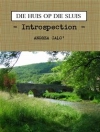A quiet revolution is taking place in America’s forests. Once seen primarily as stands of timber, our woodlands are now prized as a rich source of a wide range of commodities, from wild mushrooms and maple sugar to hundreds of medicinal plants whose uses have only begun to be fully realized. Now as timber harvesting becomes more mechanized and requires less labor, the image of the lumberjack is being replaced by that of the forager.
This book provides the first comprehensive examination of nontimber forest products (NTFPs) in the United States, illustrating their diverse importance, describing the people who harvest them, and outlining the steps that are being taken to ensure access to them. As the first extensive national overview of NTFP policy and management specific to the United States, it brings together research from numerous disciplines and analytical perspectives—such as economics, mycology, history, ecology, law, entomology, forestry, geography, and anthropology—in order to provide a cohesive picture of the current and potential role of NTFPs.
The contributors review the state of scientific knowledge of NTFPs by offering a survey of commercial and noncommercial products, an overview of uses and users, and discussions of sustainable management issues associated with ecology, cultural traditions, forest policy, and commerce. They examine some of the major social, economic, and biological benefits of NTFPs, while also addressing the potential negative consequences of NTFP harvesting on forest ecosystems and on NTFP species populations.
Within this wealth of information are rich accounts of NTFP use drawn from all parts of the American landscape—from the Pacific Northwest to the Caribbean. From honey production to a review of nontimber forest economies still active in the United States—such as the Ojibway “harvest of plants” recounted here—the book takes in the whole breadth of recent NTFP issues, including ecological concerns associated with the expansion of NTFP markets and NTFP tenure issues on federally managed lands.
No other volume offers such a comprehensive overview of NTFPs in North America. By examining all aspects of these products, it contributes to the development of more sophisticated policy and management frameworks for not only ensuring their ongoing use but also protecting the future of our forests.
Open access edition funded by the National Endowment for Humanities and the Andrew W. Mellon Foundation Humanities Open Book Program.
Mục lục
List of Tables and Figures
Preface to Kansas Open Books Edition, Eric T. Jones, Rebecca J. Mc Lain, Susan Charnley, and James Weigand
Preface
Introduction, Rebecca J. Mc Lain, and Eric T. Jones
1. Past and Present
Historical Overview of Non Timber Forest Product Uses in the United States, Marla R. Emery
The Relevance of Sociocultural Variables to Non Timber Forest Product Research, Policy and Management, Eric T. Jones and Kathryn Lynch
Case Study. Workers in the Woods: Confronting Rapid Change, Richard Hansis
Case Study. Overview of Cultural Traditions, Economic Trends, and Key Species in Nontimber Forest Products of the Pacific Northwest, James Weigand
Case Study. American Southwest, James Weigand
Case Study. The Caribbean Basin: Florida, Puerto Rico, and the U.S. Virgin Islands, James Weigand
Case Study. California, James Weigand
Case Study. Culture and Nontimber Forest Products in the American Pacific Tropics, James Weigand
Case Study. The Hidden Bounty of the Urban Forest, Paul Jahnige
Case Study. Rio Grande National Forest, Vince Spero and Carol Fleming
2. Commerce and Conservation
Nontimber Forest Product Commerce, Susan J. Alexander, James Weigand, and Keith A. Blatner
Ecological Considerations in Sustainable Use of Wild Plants, Nan C. Vance
The Paradox of Market-oriented Conservation: Lessons from the Tropical Forests, Carolyn Crook and Roger Alex Clapp
Case Study. Extractive Reserves for the United States? Lessons from the Amazonian Experience, Thomas Love
Case Study. Certification of Non-Timber Forest Products, Patrick Mallet
Between Wildcrafting and Monocultures: Agroforestry Options, Wayne S. Teel and Louise E. Buck
Case Study. Native U.S. Plants in Honey and Pollen Production, Anita G. Alexander and Susan J. Alexander
Biological Inventory and Monitoring, Becky K. Kerns, Leon Liegel, David Pilz and Susan J. Alexander
3. Native American Claims
Indian Reserved Rights, Edmund Clay Goodman
Case Study. Ojibwe Off-Reservation Harvest of Plants, Karen Danielsen and Jonathan Gilbert
Case Study. Making Peace in the Berry Patch: The 1932 Handshake Agreement and the Promise of Cultural Use Zones, Andrew H. Fisher
Case Study. Contemporary Subsistence Use of Non Timber Forest Products in Alaska, Robert Shroeder
Case Study. American Indian Management of Federal Lands: The Maidu Cultural and Development Group, Jonathan London
4. Policy and Management
Federal Non Timber Forest Products Policy and Management, Alexios Antypas, Rebecca J. Mc Lain, Jennifer Gilden and Greg Dyson
Business as Usual: The Exclusion of Mushroom Pickers in Wild Mushroom Management in Oregon’s National Forests, Rebecca J. Mc Lain
Case Study. Applying Stewardship Contracting Principles to Nontimber Forest Products, Paul Ringgold
5. Customary Claims to Use Rights on Public Lands
Non Timber Forest Product Customary Claims, Edmund Clay Goodman
Appendix A. Scientific Names of Species Listed by Common Name in Text
Appendix B. Names of Referenced Plants
Appendix C. USDA Forest Service Resource Inventories and NTFPs
Appendix D. Edible Mushrooms—Unique Inventory and Monitoring Considerations
Appendix E. Estimating Commercial Quantities of Floral Greens
Appendix F. Traditional Forestry Methods to Inventory Tree Characteristics
Appendix G. Inventory Methods for Commercial Moss Harvest
Appendix H. Rogue Institute for Ecology and Economy Special Forest Products Inventory
Appendix I. Monitoring Wild Goldenseal Populations
List of Contributors
Index
Giới thiệu về tác giả
Eric T. Jones is an instructor and research professor in the Department of Forest Ecosystems and Society at Oregon State University. Rebecca J. Mc Lain is director of research at the National Policy Consensus Center at Portland State University. Susan Charnley is a research social scientist at the Pacific Northwest Research Station of the USDA Forest Service. James Weigand is an ecologist at the US Department of the Interior, Bureau of Land Management.












